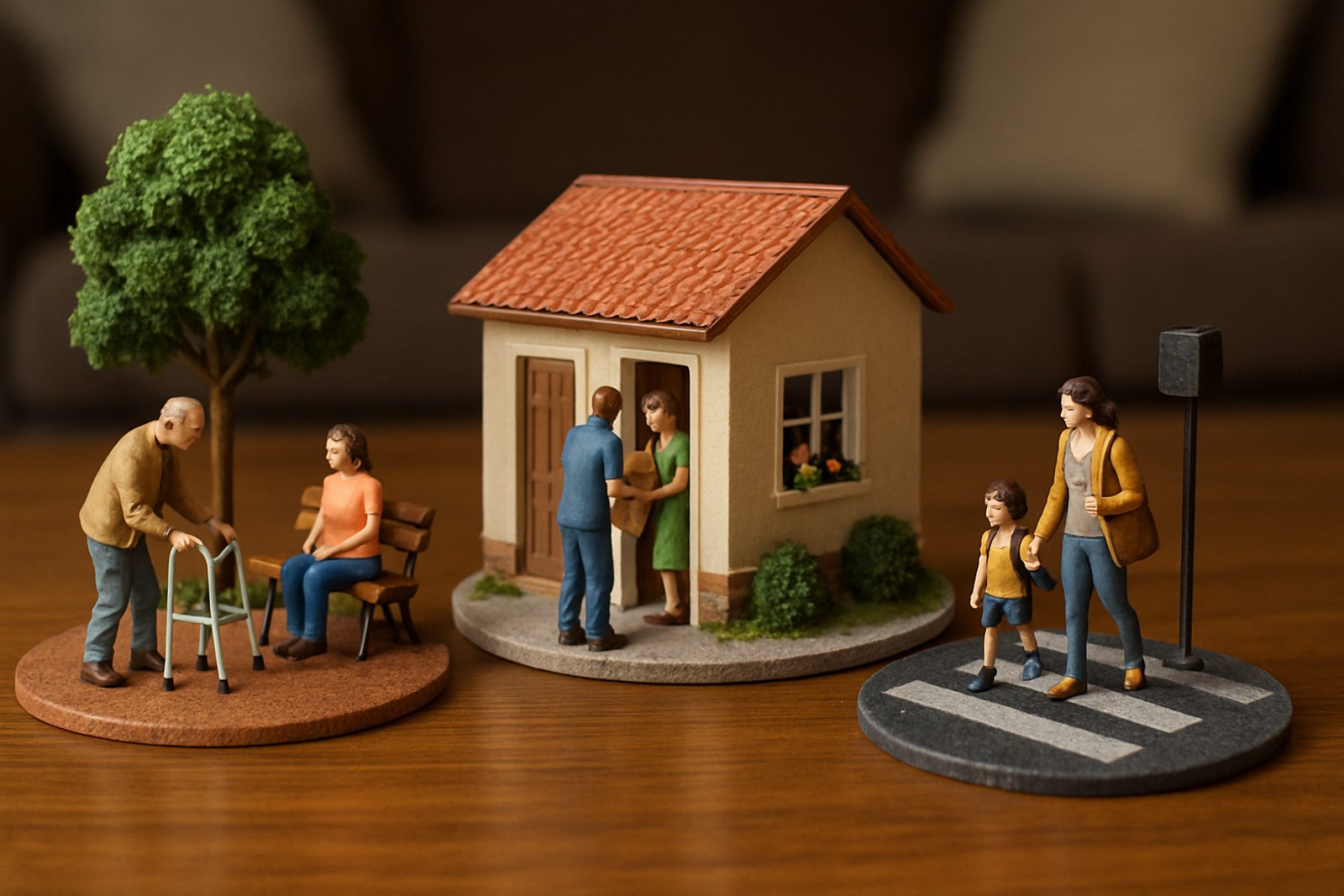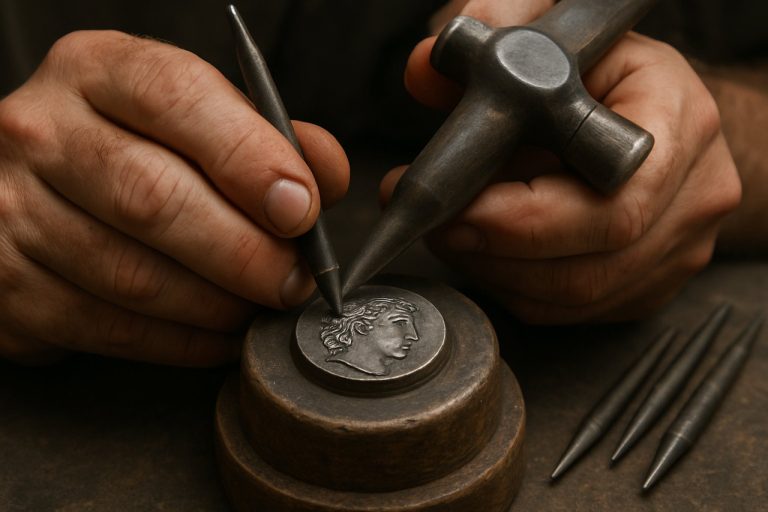Discover the Art and Magic of Miniature Civilian Dioramas. Explore How Tiny Scenes Capture the Heartbeat of Daily Life in Astonishing Detail.
- Introduction to Miniature Civilian Dioramas
- Historical Evolution and Cultural Significance
- Essential Tools and Materials for Diorama Creation
- Techniques for Realistic Detailing and Scene Composition
- Popular Themes and Storytelling Approaches
- Showcasing Notable Artists and Iconic Works
- Tips for Beginners: Getting Started with Your First Diorama
- Preservation, Display, and Photography of Miniature Dioramas
- Community, Exhibitions, and Online Resources
- Future Trends in Miniature Civilian Diorama Art
- Sources & References
Introduction to Miniature Civilian Dioramas
Miniature civilian dioramas are meticulously crafted three-dimensional scenes that depict everyday life, historical events, or imagined scenarios outside of military or combat contexts. Unlike their military counterparts, these dioramas focus on civilian environments such as urban streets, rural landscapes, marketplaces, homes, and workplaces. The primary aim is to capture the nuances of daily life, social interactions, and cultural settings in miniature form, often at scales like 1:35, 1:48, or 1:87. This genre appeals to hobbyists, artists, and historians alike, offering a unique way to explore and preserve aspects of social history and architecture.
The creation of a civilian diorama involves a blend of artistic skill, historical research, and technical precision. Modelers often use a variety of materials—plastic, resin, wood, and paper—to construct buildings, vehicles, figures, and accessories. Attention to detail is paramount, as the authenticity of the scene relies on accurate representation of clothing, architecture, and everyday objects from the chosen era or locale. Many enthusiasts draw inspiration from archival photographs, paintings, and firsthand accounts to ensure historical accuracy and narrative depth.
Miniature civilian dioramas serve multiple purposes: they are educational tools in museums, storytelling devices in art exhibitions, and personal expressions of creativity for hobbyists. The popularity of this art form is supported by a vibrant community, with resources and inspiration available from organizations such as the International Plastic Modelers' Society and publications like FineScale Modeler. As a result, civilian dioramas continue to evolve, reflecting both historical realities and the imaginative visions of their creators.
Historical Evolution and Cultural Significance
The historical evolution of miniature civilian dioramas reflects broader trends in art, education, and social documentation. Originating in the 19th century, early dioramas were often used in museums and educational settings to depict daily life, urban scenes, and significant historical events. These early models provided a tangible, three-dimensional way to visualize and understand the complexities of civilian life, from bustling marketplaces to domestic interiors. Over time, the craft expanded beyond institutional use, becoming a popular hobby and artistic pursuit. The rise of model railroading in the early 20th century, for example, spurred the creation of detailed civilian landscapes and vignettes, further embedding dioramas in popular culture Smithsonian Magazine.
Culturally, miniature civilian dioramas serve as both artistic expression and historical record. They capture the nuances of everyday life, preserving customs, architecture, and social interactions that might otherwise be forgotten. In many societies, these dioramas have been used to teach history, foster empathy, and encourage reflection on social change. Contemporary artists and hobbyists continue to use dioramas to comment on current events, explore nostalgia, or reconstruct lost worlds, making them a dynamic medium for storytelling and cultural preservation Victoria and Albert Museum. The enduring appeal of miniature civilian dioramas lies in their ability to bridge the gap between past and present, offering viewers a unique, immersive perspective on the fabric of everyday life.
Essential Tools and Materials for Diorama Creation
Creating miniature civilian dioramas requires a thoughtful selection of tools and materials to achieve realism and durability. The foundation typically begins with a sturdy base, such as MDF board or high-density foam, which provides stability for the scene. For sculpting terrain and architectural features, modelers often use materials like polystyrene, foam board, or air-dry clay. These can be shaped and textured with hobby knives, sculpting tools, and sandpaper to mimic natural landscapes or urban environments.
Precision is crucial in miniature work, making fine-tipped tweezers, pin vises, and micro-drills indispensable for assembling small components and adding intricate details. High-quality hobby knives and cutting mats ensure clean, accurate cuts for structures and figures. For painting, a range of fine brushes, acrylic paints, and weathering powders allow for nuanced color application and realistic aging effects. Airbrushes are also popular for achieving smooth gradients and subtle shading on larger surfaces.
Adhesives play a vital role; cyanoacrylate (super glue) and PVA glue are commonly used for bonding different materials. Static grass applicators, flocking, and scenic materials such as gravel, sand, and foliage help bring the diorama to life by replicating natural textures. Lighting elements, like miniature LEDs, can be incorporated for added realism in modern or night-time scenes.
For sourcing these materials, specialized hobby retailers and online suppliers offer a wide range of products tailored to diorama building, such as those found at Micro-Mark and Woodland Scenics. Investing in quality tools and materials not only enhances the creative process but also ensures the longevity and visual impact of the finished diorama.
Techniques for Realistic Detailing and Scene Composition
Achieving realism in miniature civilian dioramas relies heavily on meticulous detailing and thoughtful scene composition. One essential technique is the use of scale-appropriate materials and textures. For example, fine-grit sandpaper can mimic asphalt, while static grass and flocking create convincing lawns and shrubbery. Weathering techniques, such as dry brushing and washes, add depth and a sense of age to buildings, vehicles, and street furniture, making them appear lived-in and authentic. Incorporating everyday objects—like newspapers, bicycles, or laundry lines—further enhances the narrative and believability of the scene.
Scene composition is equally critical. Effective dioramas guide the viewer’s eye through the layout using principles of balance, focal points, and perspective. Placing figures in natural, dynamic poses—such as children playing or adults conversing—adds life and movement. Layering elements from foreground to background, and varying heights and textures, creates a sense of depth and three-dimensionality. Lighting also plays a significant role; subtle use of LEDs or fiber optics can simulate streetlights or interior glows, enhancing atmosphere and realism.
Reference to real-world scenes, photographs, and urban planning resources can inspire accurate layouts and details. Many modelers consult resources like the National Model Railroad Association for standards and tips, or study urban design guides from organizations such as the American Planning Association. Ultimately, the most compelling civilian dioramas are those where every detail, from the placement of a park bench to the weathering on a lamppost, contributes to a cohesive and believable miniature world.
Popular Themes and Storytelling Approaches
Miniature civilian dioramas captivate hobbyists and viewers alike through their diverse themes and nuanced storytelling. Popular themes often reflect everyday life, such as bustling marketplaces, tranquil domestic scenes, or urban street corners. These settings allow creators to explore social interactions, cultural traditions, and historical moments on a small scale. For example, a diorama might depict a 1950s diner, a rural village festival, or a contemporary city park, each scene inviting viewers to imagine the lives and stories of its tiny inhabitants.
Storytelling in civilian dioramas relies heavily on detail and composition. Artists use carefully posed figures, realistic props, and environmental cues to suggest narratives without words. The placement of objects—a spilled basket of fruit, a newspaper left on a bench, or a child’s toy in a garden—can hint at recent events or ongoing activities. Lighting and perspective further enhance the mood, guiding the viewer’s eye and evoking specific emotions or times of day. Some creators incorporate motion or sound, adding dynamic elements to their scenes.
Many diorama artists draw inspiration from personal memories, historical research, or classic works of art, blending fact and fiction to create immersive worlds. Online communities and exhibitions, such as those organized by the International Plastic Modelers' Society and the Miniatur Wunderland, showcase a wide range of civilian dioramas, highlighting both traditional and innovative approaches to miniature storytelling. Through these themes and techniques, civilian dioramas offer a unique lens on human experience, celebrating the beauty and complexity of ordinary life.
Showcasing Notable Artists and Iconic Works
The world of miniature civilian dioramas has been shaped by a number of visionary artists whose works have elevated the craft to an art form. Among the most influential is Michael Smith Dioramas, known for his hyper-realistic urban scenes that capture the subtle nuances of everyday life. Smith’s attention to detail—down to weathered signage and littered sidewalks—has set a benchmark for realism in the field. Another prominent figure is David Neat, whose dioramas often explore domestic interiors and social spaces, blending narrative storytelling with meticulous craftsmanship.
Iconic works in this genre often reflect broader social or historical themes. For example, Miniatur Wunderland in Hamburg, Germany, features sprawling civilian dioramas that depict bustling cityscapes, rural villages, and everyday moments frozen in time. These installations are celebrated for their dynamic lighting, moving elements, and the sheer scale of their detail. In the United States, The Diorama Man has gained recognition for his evocative recreations of mid-century American life, from diners to suburban neighborhoods, each piece inviting viewers to step into a miniature world.
These artists and their iconic works not only demonstrate technical mastery but also highlight the narrative potential of civilian dioramas. Their creations serve as both historical documents and imaginative spaces, inspiring a new generation of modelers to push the boundaries of what miniature art can achieve.
Tips for Beginners: Getting Started with Your First Diorama
Starting your first miniature civilian diorama can be both exciting and daunting. To ensure a rewarding experience, begin by selecting a simple, manageable scene—such as a park bench, a street corner, or a small market stall. This allows you to focus on mastering basic techniques without being overwhelmed by complexity. Planning is crucial: sketch your layout and gather reference images to guide your composition and color choices.
Choose a scale that suits your comfort level; 1:35 and 1:48 are popular for beginners due to the availability of figures and accessories. Invest in essential tools like a sharp hobby knife, fine brushes, tweezers, and a cutting mat. For materials, start with basic modeling clay, foam board, and acrylic paints. When assembling figures and structures, dry-fit pieces before gluing to ensure proper alignment.
Pay attention to painting and weathering. Use thin layers of paint and build up color gradually for a realistic effect. Simple weathering techniques, such as dry brushing and washes, can add depth and authenticity to your scene. Don’t overlook the importance of groundwork—texture your base with sand, static grass, or small stones to create a convincing environment.
Finally, seek inspiration and advice from online communities and tutorials. Resources like International Plastic Modelers' Society USA and Scale Model Addict offer valuable tips and support for beginners. Remember, patience and practice are key—each project will improve your skills and confidence.
Preservation, Display, and Photography of Miniature Dioramas
Preserving, displaying, and photographing miniature civilian dioramas are crucial steps in both safeguarding the artistry and sharing the intricate details with a wider audience. Preservation begins with environmental control: dioramas should be kept away from direct sunlight, excessive humidity, and dust, as these factors can cause fading, warping, or deterioration of delicate materials. Display cases made from UV-filtering acrylic or glass are highly recommended to protect the models while allowing clear viewing. Stable, vibration-free surfaces further prevent accidental damage, especially for dioramas featuring fine, fragile elements.
When it comes to display, thoughtful lighting is essential. LED lights are preferred due to their low heat emission and customizable color temperatures, which can enhance the realism of scenes without risking heat damage. Adjustable spotlights or strip lighting can be used to highlight specific features, such as figures or architectural details, while avoiding harsh shadows or glare. Rotating display stands can also offer viewers multiple perspectives without the need to handle the diorama directly.
Photography of miniature civilian dioramas requires careful attention to scale and depth of field. Macro lenses and tripods help capture fine details and maintain sharpness. Diffused lighting, achieved with softboxes or light tents, minimizes harsh reflections and shadows, ensuring the miniature scene appears lifelike. Backgrounds should be neutral or contextually appropriate to avoid distracting from the diorama itself. For sharing online or in print, high-resolution images and post-processing techniques can further enhance the visual impact, as recommended by organizations such as the International Plastic Modelers' Society and the Miniature Art Society.
Community, Exhibitions, and Online Resources
The community surrounding miniature civilian dioramas is vibrant and global, uniting hobbyists, artists, and collectors who share a passion for recreating everyday life in miniature form. Local clubs and national organizations, such as the International Plastic Modelers' Society (IPMS/USA), often host regular meetings, workshops, and competitions where enthusiasts can exchange techniques, showcase their work, and receive constructive feedback. These gatherings foster camaraderie and provide invaluable learning opportunities for both beginners and seasoned modelers.
Exhibitions and conventions play a crucial role in the diorama community. Events like the annual Euro Miniature Expo and Scale Model Challenge attract international participants, offering dedicated categories for civilian dioramas. These exhibitions not only highlight technical skill and creativity but also encourage the exploration of diverse historical and contemporary civilian themes. Awards and public recognition at such events can inspire new trends and raise the profile of civilian diorama modeling.
Online resources have dramatically expanded access to information and community support. Forums such as Scale Model Addict and Armorama provide platforms for sharing build logs, tutorials, and product reviews. Social media groups and YouTube channels further democratize knowledge, allowing modelers to connect, collaborate, and learn regardless of geographic location. These digital spaces are essential for staying updated on new techniques, materials, and industry news, ensuring the continued growth and innovation of the miniature civilian diorama hobby.
Future Trends in Miniature Civilian Diorama Art
The future of miniature civilian diorama art is being shaped by technological innovation, evolving artistic trends, and a growing global community of enthusiasts. One significant trend is the integration of digital tools, such as 3D modeling software and 3D printing, which allow artists to design and produce highly detailed, custom components that were previously difficult or impossible to create by hand. This democratization of production is expanding creative possibilities and making the hobby more accessible to newcomers. Additionally, the use of LED lighting and micro-electronics is enabling dynamic, interactive scenes that bring dioramas to life with movement and illumination.
Another emerging trend is the focus on hyper-realism and storytelling. Artists are increasingly using advanced weathering techniques, realistic materials, and intricate figures to capture everyday moments and social narratives, reflecting contemporary life or historical events with greater authenticity. The influence of social media platforms and online communities is also fostering collaboration and knowledge sharing, as seen in the growing number of virtual exhibitions and tutorials hosted by organizations like the International Plastic Modelers' Society.
Sustainability is becoming a concern as well, with more creators seeking eco-friendly materials and methods to reduce environmental impact. As the boundaries between traditional craftsmanship and digital innovation continue to blur, the art of miniature civilian dioramas is poised for further growth, attracting a diverse new generation of artists and collectors worldwide. These trends suggest a vibrant future where creativity, technology, and community intersect to redefine what is possible in this unique art form.
Sources & References
- International Plastic Modelers' Society
- FineScale Modeler
- Victoria and Albert Museum
- National Model Railroad Association
- Miniatur Wunderland
- Scale Model Addict
- Armorama










